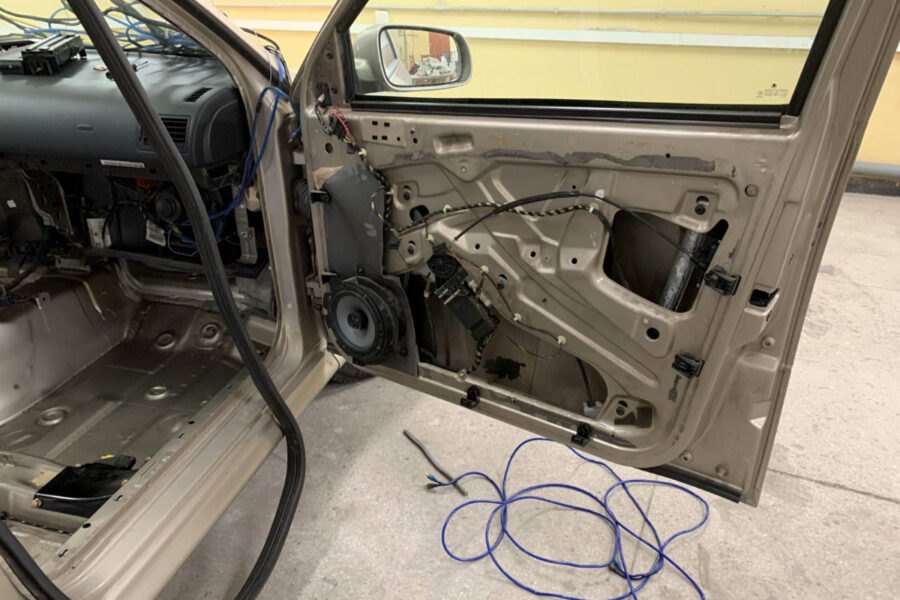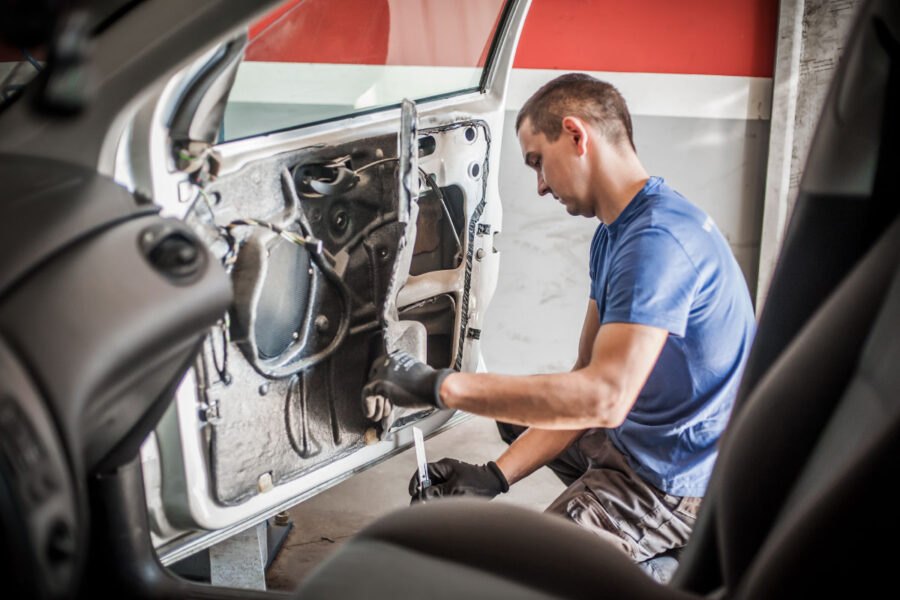Sound insulation of car doors. Soundproofing car doors
Sound insulation in car doors plays an important role in increasing driving comfort.
Car doors have a large surface area and are made of relatively thin (compared to the body) metal. This makes them an excellent conductor of sound and vibration. The metal resonates with shocks, passing traffic and wind currents. It transmits street noise well.
The problem is partially solved by factory-installed acoustic insulation. However, it may have inadequate or no vibration and sound absorption properties.
Good sound insulation will also be useful if you like listening to music in the car. Often the speaker system will make a lot of vibrations and rattles.
And equal attention should be paid to both vibration and thermal and acoustic insulation. In addition to reducing noise, we will certainly improve the quality of the car’s acoustics. Thanks to the use of vibration-absorbing materials, you will hear bass from the speakers. The presence of rubber foam will remove distortions from the sound and you will hear new notes in the music that were previously unheard on an acoustic. When processing car doors, additional soundproofing is installed in several layers.
Thanks to appropriate processing, vibration loads and noise are reduced, and the acoustics installed in the doors will perform at a much higher level. Additional sound insulation is installed in several layers.

Recommended materials for effective soundproofing of car doors:
Vibration absorbing materials:
ABM Professional self-adhesive acoustic mat, 2-4 mm thick
or ABM Extreme self-adhesive acoustic mat with a thickness of 2-4 mm for more effective soundproofing.
Average amount of material for one car door: 3.5 m2
Their task is to transfer the resonance to a different frequency and dampen vibrations. The effectiveness of vibration depends on many factors, including how tightly it adheres to the surface. For this reason, before installation, the gates are thoroughly cleaned and degreased, and the material is rolled using a roller.
Noise dampening material:
Insulating rubber foam, 6-10 mm thick
Average amount of material for one car door: 0.5 m2
They muffle sound by converting sound wave energy into heat. These materials are most effective for medium and high frequencies.
Accessories:
Extraction gasoline for cleaning tools and stubborn dirt. Perfectly dissolving old, greasy deposits, oil and grease stains, and multi-layer layers of dirt. Using a degreaser before soundproofing your car is mandatory
ABM metal mounting and pressure roller for pressing soundproofing mats
How to soundproof car doors? The order of work:

Step 1. Removing the plastic door trims.
Once the wainscoting is removed, the original sound and vibration insulation can be examined. If the vibration absorber has not split or cracked, is secured and has no air bubbles, it can be left in place. However, if the factory acoustic insulation has peeled off or is questionable, it should be removed.
Step 2. Cleaning the work surface. Material: extraction naphtha
Once the wainscoting is removed, the original sound and vibration insulation can be examined. If the vibration absorber has not split or cracked, is secured and has no air bubbles, it can be left in place. However, if the factory acoustic insulation has peeled off or is questionable, it should be removed.
Step 3. Installation of anti-vibration insulation. Material: ABM Professional self-adhesive acoustic mat, 2-4 mm thick, or ABM Extreme self-adhesive acoustic mat, 2-4 mm thick, for more effective soundproofing.
As mentioned above, this is done with a roller to avoid air bubbles. They reduce the effectiveness of sound insulation and pose a risk of condensation, which may lead to corrosion. Another important note: the drain holes at the bottom of the door must remain open.
Step 4. Installation of the sound absorber. Material: 10 mm thick insulating rubber foam
It absorbs sounds from outside and ensures silence in the passenger compartment.
Step 5. Installing sound-absorbing material on the wainscoting. Material: 6 mm thick insulating rubber foam
This will absorb the rest of the sound wave and remove any reflected noise in the passenger compartment.
Door soundproofing properties
During installation, make sure that neither the fasteners nor the electrics are sealed with soundproof material. For this reason, it is not advisable to apply soundproofing materials in one continuous layer (except for wainscoting). This will only complicate subsequent repairs: you will have to remove the sound insulation to get to the functional elements.
We do not recommend doing door soundproofing yourself to avoid these mistakes. Leave the work to the professionals.


